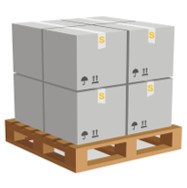Aftercaresupported scale guide for ecommerce catalogs

Steering through online apparel stores frequently proves difficult when aiming for an accurate fit. In contrast to shops where fittings are possible, online buying regularly leaves shoppers wondering how apparel will genuinely drape on their figure. Yet, stay reassured! Equipped with basic savvy and appropriate instruments, you can tame e-commerce sizing and select garments that flatter your personal shape. First step: acquaint yourself with your dimensions. It matters to record bust, waist, hips, and the inseam. Adopt a cloth measuring tape to record accurate sizes. Don't be afraid to consult size charts provided by the retailer. The size tables normally deliver clear measurements and corresponding size interpretations. Plus, consult prior buyer reviews. Prior purchasers can give practical guidance about how an item truly fits. Seek reviews addressing size and offering helpful details on garment fit.
Comprehending standard size definitions: their meanings and applications.
Within design and manufacturing and routine activities, standard sizing holds significant importance. From sofas and shirts to lumber and tiles, standard dimensions maintain predictable compatibility and consistency. Understanding what these standard sizes mean and how to utilize them can be essential for successful projects and avoiding unnecessary headaches.
Initially, probe common sizing labels and their interpretations. For clarity, a regular sheet of paper is typically 8.5 by 11 inches. This practice is widely embraced among different industries and supports printing and information flow.
- In the clothing sector, standard charts furnish a framework for choosing sizes according to body metrics like height, bust, and waist.
- Moreover, when arranging furniture, knowledge of standard sizes proves vital for proper fit within a room.

Cracking size charts: helpful hints for precise measurements.
Working out the right clothing size can feel like unraveling a secret formula. Ambiguous size guides can leave buyers feeling unsettled. However, stay calm! Adopting these effective tips, you can secure accurate sizing and bid farewell to misfit clothing. First up, obtain a dependable tape measure. Make sure it's flexible enough to contour your body comfortably. Position yourself upright before a mirror and keep muscles relaxed for precise readings. Wind the tape around the fullest bust area with it held parallel to the floor. Do the same for your waist (just above your navel) and for hip circumference at the widest zone. Keep from cinching the tape too tight – opt for snug comfort instead. Consult the size chart of the specific garment you're interested in, as sizing can vary between brands. Notice notes about body shape and the garment’s designed fit. Align your measurements with the size guide and select the best-fitting size accordingly.Understanding digital clothing sizes: steering through complexities.
Beginning a virtual apparel shopping session can be exciting yet typically poses the particular issue of deciphering online sizing. Unlike traditional brick-and-mortar stores where you can physically try on garments, the digital realm requires a bit more caution. Dimension guides from merchants present valuable details but often cannot replace the personalization of in-store try-ons. To enhance your fit success, analyze size charts attentively, align them with your measurements, and account for brand variation.
- Leverage reviews: fellow customers’ feedback gives crucial information about real-world fit.
- Take precise measurements: a pliable tape and a full-length mirror will be your most dependable aids.
- Don’t count on your standard size alone: because brands change sizing, always look at the specific chart.
Incorporating these approaches empowers you to resolve online sizing subtleties with confidence and enjoy superior shopping results.
Size guide fundamentals covering XS through XXL.

Working out the optimum size sometimes proves puzzling. That’s why size charts are beneficial! They present essential information about measurements to guide size selection. Be it online or in-person shopping, consulting a size chart remains a smart practice. That guarantees your new item fits well so you can wear it comfortably. A short primer to help make sense of typical size abbreviations: * XS: Ultra Small * S: Small * M: Large * L: Broad * XL: Xtra Large * XXL: Double Extra Large Note that charts vary between brands, so review each product’s guide. Enjoy picking out items!
An essential guide to standard clothing sizes.
Working with standard clothing sizes can be bewildering. Varying brands and distinct garment styles under one label may display large sizing differences. Such differences complicate the search for comfortable, well-fitting clothes. Luckily, a handful of guidelines can help you with standard size apparel decisions. It’s crucial to inspect the size chart for each garment you plan to buy. Don’t just pick based on your habitual size. Get your measurements and cross-check them with the sizing chart. Keep in mind that sizing can vary from season to season and even from year to year. So, ensure you check the size table before buying anything. In conclusion, adjust your size choice up or down if it’s appropriate. Opt for properly fitting garments instead of ones that are too tight or too slack.Finding styles that work: outfits that complement your body shape.
When discussing style, a one-size-fits-all approach doesn’t exist. Each body type is unique and deserves clothes that accentuate its assets. Recognizing your silhouette helps you pick outfits that increase self-assurance.
- Kick off by obtaining bust, waist, and hip measurements.
- Reflect on your stature and body build.
- Remember that these are just guidelines.

From pixels to reality: online sizing made easy.
Achieving the right fit with online shopping can be problematic. Conventional size tables frequently provoke guesswork and result in returns and letdowns. Yet don’t worry! Cutting-edge e-commerce sizing technologies are altering shopping dynamics. Platforms deploy your measurements with algorithmic processing to yield personalized fits that mirror real-life results.
- Leave guesswork behind and gain confidence during online buying.
- Proper sizing empowers you to love your purchases without return-related anxiety or misfits.
Identifying bust, waist, hips: mastering measurement essentials.
Achieving a perfect fit with your clothes often hinges on accurate size measurement. Appreciating chest, waist, and hip measures is important for Standard Size selecting clothing that flatters your silhouette. Ensure precision by using a pliable measuring tape: stand tall with relaxed shoulders, wrap it around the fullest bust point and keep it even across your back. Log the value in inches or in centimeters. Following that, find your natural waist, generally above your navel, and take its circumference measurement. Finally, stand with your feet together and wrap the tape measure around the widest part of your hips, ensuring it sits level above your bottom. Holding these measurements enables confident comparison with size charts from multiple brands. Consider that sizing fluctuates among producers—consult multiple charts for accuracy. Feel free to adjust up or down depending on the garment’s intended fit.
Conquer clothing size confusion: your ultimate sizing solution.

Are you fed up with size differences that make outfits mismatched? Do you struggle to navigate the often confusing world of clothing sizes? We know the frustration, so we put together this thorough guide to overcome sizing puzzles and secure the right fit consistently.
- Get ready to access accurate sizing methods and tips on measuring yourself correctly.
- Examine common sizing gaps and strategies to navigate them among different brands and cuts.
- Determine your ideal size across wardrobe categories from tops and bottoms to dresses and overcoats.
With our expert advice, you'll be able to say goodbye to sizing frustration and build a wardrobe that fits you perfectly.
Nailing the perfect fit time after time.
When dealing with garments, a crucial aspect is proper fit. A snugly fitting outfit increases confidence and appearance, but an ill-fitting one can leave you feeling insecure and unhappy. Fortunately, finding the correct size can be straightforward rather than intimidating. Use these valuable tips: * Use the brand’s provided size chart for reference. * Obtain precise measurements of your body dimensions. * Don’t base your choice only on your usual size. Factor in the fabric type and how much it can stretch. * If torn between sizes, select the bigger size for a relaxed fit. You can always alter the garment later if needed.